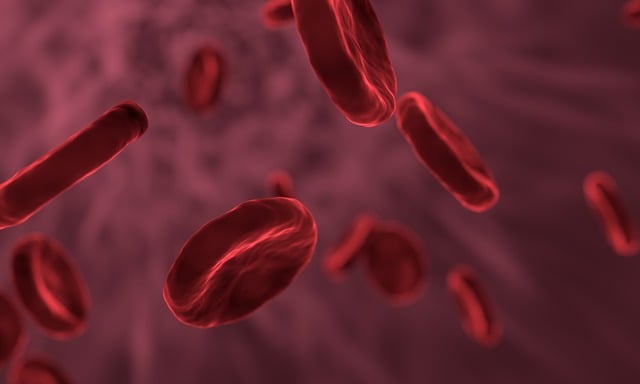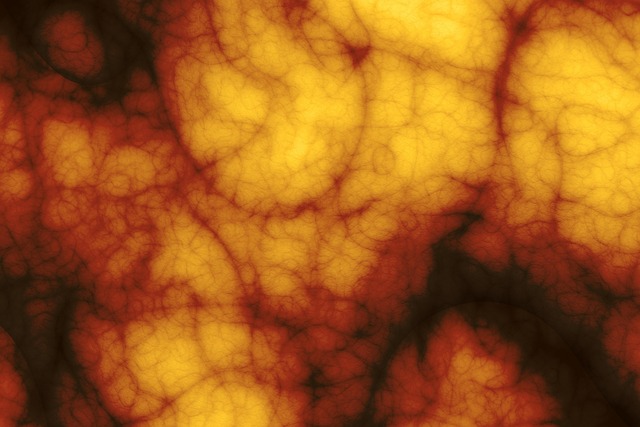Fat cell freezing (cryolipolysis) is a non-invasive cosmetic procedure that uses cold energy to break down and eliminate stubborn fat cells, offering a safe and low-risk alternative to surgery for body contouring. This method targets specific areas like arms, chin, love handles, abdomen, thighs, and underarms, providing noticeable shape improvements without significant downtime. The process involves a consultation, application of a cooling device to freeze targeted fat cells, and subsequent body response to break down and eliminate frozen cells. Proper post-treatment care and regular check-ins ensure optimal results, with long-term maintenance focusing on healthy lifestyle habits and specific exercises.
“Uncover the revolutionary world of Non-Invasive Fat Cell Freezing—a groundbreaking, non-surgical solution for achieving a sculpted body. This comprehensive guide delves into the science behind this popular fat reduction method, exploring its mechanisms and diverse benefits. From understanding the process to discovering ideal treatment areas, we demystify fat freezing. Learn about safety, procedure steps, and post-care to make an informed decision. Embrace a new you with Fat Cell Freezing.”
Understanding Fat Cell Freezing: A Non-Invasive Approach

Fat cell freezing, also known as cryolipolysis, is a non-invasive cosmetic procedure that has gained popularity for its ability to reduce stubborn fat deposits. This innovative approach targets and crystallizes fat cells, effectively breaking them down and eliminating them from the body. Unlike traditional liposuction, which involves surgical incisions, fat cell freezing offers a painless and relatively risk-free alternative.
The process begins with the application of cooling technology on specific areas of the body containing excess fat. This cold temperature induces the crystallization of fat cells, damaging their cellular structure. Over time, these damaged fat cells are naturally eliminated by the body, leading to a noticeable reduction in fat accumulation. This non-invasive approach makes it an attractive option for individuals seeking to sculpt and define their contour without surgery.
How Does Fat Cell Freezing Work?

Fat cell freezing, also known as cryolipolysis, is a non-invasive procedure that targets and freezes fat cells under the skin. This innovative treatment offers a way to reduce stubborn fat deposits without surgery or downtime. During the process, a specialized device delivers cold energy to the targeted area, causing the fat cells to crystallize and eventually die. As these dead fat cells are processed by the body’s natural waste system, they are eliminated, leading to a slimmer profile.
The procedure is designed to be comfortable for patients, with minimal discomfort reported. It’s particularly effective for treating small areas of fat that resist diet and exercise, such as the arms, chin, and love handles. Multiple sessions are usually required, as the process takes time for optimal results, but many see noticeable improvements after just a few treatments.
Benefits of Choosing Non-Invasive Fat Reduction

Choosing non-invasive fat reduction methods like Fat Cell Freezing offers several significant advantages. Firstly, it’s a minimally invasive procedure, eliminating the need for incisions and reducing recovery time compared to surgical options. This makes it an attractive choice for individuals seeking a quick return to their daily routines without extensive downtime.
Additionally, non-invasive fat freezing is highly effective in targeting and destroying fat cells. By cooling fat to sub-zero temperatures, this procedure safely and effectively reduces stubborn fat deposits, leading to noticeable results. Such treatments are also versatile, capable of addressing various areas of the body where excess fat may be a concern.
Target Areas for Fat Cell Freezing Treatment

When considering non-invasive fat cell freezing as a body contouring solution, several target areas are most commonly treated. These include the abdomen, love handles (lateral aspects of the midriff), thighs, and even the underarms. Each area presents unique challenges, but fat cell freezing technology has advanced to effectively target and eliminate fat cells in these localized regions without causing significant discomfort or downtime.
The treatment focuses on areas where excess fat accumulation is often considered both cosmetically concerning and potentially health-related. Targeting these specific zones can lead to noticeable improvements in body shape and silhouette, enhancing overall appearance and boosting confidence. Moreover, fat cell freezing offers a non-surgical alternative for those seeking body contouring without the invasiveness of traditional procedures.
The Science Behind Selectivity in Fat Cell Targeting

The science behind non-invasive fat cell freezing centers on highly targeted and precise cooling technology. Unlike traditional liposuction, which surgically removes fat cells, fat cell freezing uses cold temperatures to crystallize and destroy specific adipocytes (fat cells) while minimizing damage to surrounding tissues. This selectivity is achieved through a meticulous understanding of cellular biology. Specialized machines cool the skin to sub-zero temperatures, targeting fat layers without affecting deeper structures.
The process involves several key steps: identifying and marking the fat cells to be frozen, precisely delivering cold air or liquid nitrogen to those cells, and then maintaining optimal temperature levels for a specific duration to ensure effective cell destruction. This non-invasive approach offers a safer alternative to surgery, with less downtime and minimal side effects. The result is reduced fat in targeted areas without altering overall body composition.
Safety and Efficacy Considerations

Fat Cell Freezing, while appearing as a straightforward solution for eliminating unwanted fat, requires careful consideration regarding safety and efficacy. As with any medical procedure, there are potential risks and side effects associated with this non-invasive treatment. One primary concern is ensuring that the freezing process accurately targets and destroys fat cells without causing damage to surrounding tissues or essential structures. Proper training and utilizing advanced technologies are crucial to minimize these risks.
Furthermore, understanding individual patient factors is essential for effective Fat Cell Freezing. Different body types and areas of fat accumulation may respond differently to treatment. Efficacy can vary based on factors like skin thickness, muscle mass, and the amount of subcutaneous fat present. Skilled practitioners must carefully assess each case, providing personalized treatments for optimal results while adhering to strict safety protocols.
Procedure Steps: What to Expect During a Session

During a fat cell freezing session, a healthcare provider will begin by consulting with you to understand your goals and any concerns. They’ll then perform a thorough examination to identify the areas to be treated. The procedure typically involves several key steps. First, a cooling device is applied to your targeted fat cells, rapidly lowering the temperature to freeze them. This process is usually painless, thanks to topical numbing creams or intra-cutaneous injections administered beforehand. After the cooling device is removed, the body’s natural response to fat cell freezing kicks in, breaking down and eliminating the frozen cells over time.
Following the session, you may experience temporary redness, swelling, or discomfort at the treatment sites, similar to a mild sunburn. This is normal and usually subsides within a few days. It’s crucial to follow post-treatment instructions from your provider, which may include staying hydrated, avoiding strenuous exercise in the treated areas, and applying recommended topicals to aid healing. Regular check-ins with your healthcare provider will help monitor progress and ensure positive outcomes from fat cell freezing.
Post-Treatment Care and Maintenance

After successful fat cell freezing procedures, proper post-treatment care is essential for optimal results. Patients should expect some temporary redness and swelling at the treatment sites, which typically subside within a few days to a week. It’s crucial to maintain a healthy lifestyle during this period, including a balanced diet and regular exercise, focusing on cardiovascular activities and light strength training. Staying hydrated and avoiding strenuous activities or extreme temperatures can help minimize discomfort.
Long-term maintenance involves consistent self-care practices. Regular check-ins with healthcare professionals ensure any potential issues are addressed promptly. Patients may be advised to incorporate specific exercises targeting treated areas to improve circulation and enhance results. Additionally, maintaining a healthy weight through diet and exercise is vital to prevent future fat cell regrowth in the treated areas.
